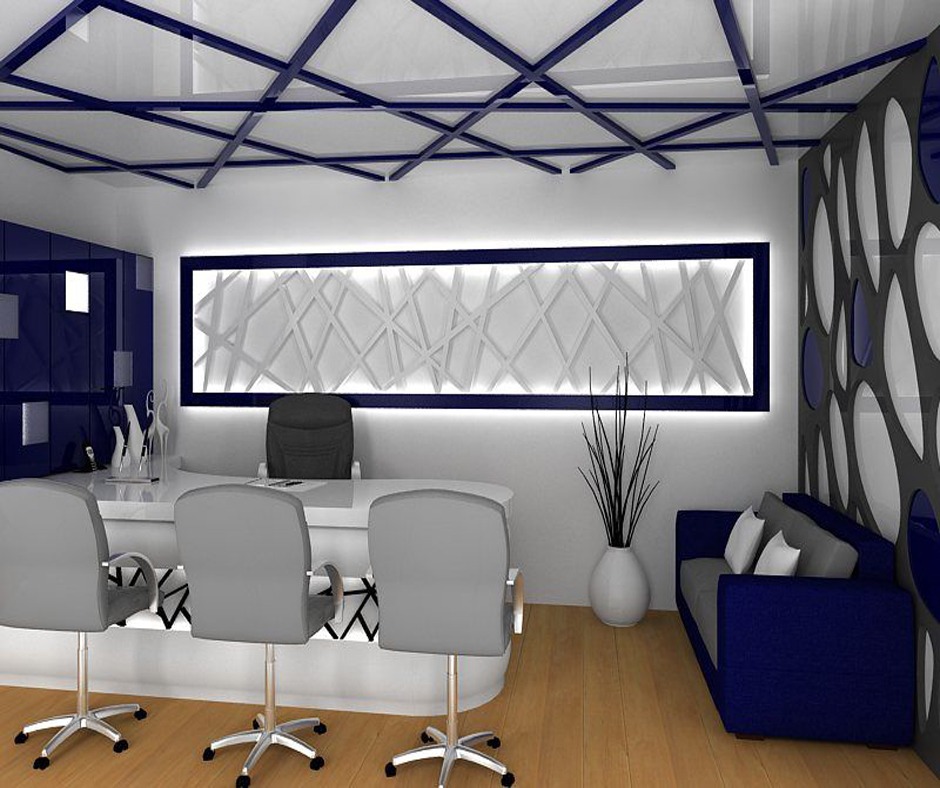The psychology of colors in interior design is a fascinating aspect that influences our emotions, perceptions, and overall well-being within a space. Colors have the power to evoke specific feelings and create certain atmospheres, making them an essential element in designing interior spaces. By understanding the psychological effects of different colors, interior designers can create environments that cater to specific moods, preferences, and functions.
Let’s delve deeper into the psychology of colors and their applications in interior design:
Blue:
Blue is often associated with tranquility, calmness, and serenity. It has a soothing effect on the mind and body, making it a popular choice for bedrooms, bathrooms, and areas where relaxation is desired. Lighter shades of blue can create a sense of openness and freshness, while deeper shades can evoke a more contemplative and introspective mood.
Red:
Red is a color that demands attention and evokes strong emotions. It is often associated with passion, energy, and excitement. Red can be used strategically as an accent color to create focal points or draw attention to specific elements in a room. However, it’s important to use red sparingly as it can be overwhelming if used excessively.
Yellow:
Yellow is a cheerful and uplifting color that promotes optimism, happiness, and energy. It can make a space feel bright and vibrant, making it suitable for areas where socialization and activity are encouraged. Yellow is often used in kitchens, dining areas, and playrooms to create a lively and inviting atmosphere.
Green:
Green is a color that symbolizes nature, growth, and harmony. It has a calming effect and is often associated with feelings of balance and tranquility. Green can be used in various shades to create different moods and atmospheres. Lighter shades of green can create a fresh and rejuvenating ambiance, while deeper shades can add depth and richness to a space. Green is commonly used in bedrooms, living rooms, and spaces where relaxation and a connection with nature are desired.
Purple:
Purple is a color often associated with luxury, creativity, and spirituality. It has a rich and mysterious quality that can create a sense of opulence and depth within a space. Lighter shades of purple, such as lavender, can create a soothing and calming ambiance, making them suitable for bedrooms and meditation rooms. Darker shades of purple, such as eggplant or plum, can add a touch of drama and sophistication to a space.
Orange:
Orange is a warm and energetic color that stimulates enthusiasm, creativity, and social interaction. It is often associated with excitement and optimism. Orange can be used to create a welcoming and inviting atmosphere, making it suitable for living rooms, dining areas, or spaces where social gatherings take place. However, it’s important to use orange in moderation as it can be overpowering if used excessively.
Neutral Colors:
Neutral colors such as white, gray, and beige are often used as the base colors in interior design. They provide a sense of balance and act as a backdrop for other colors and elements within a room. Neutral colors can create a clean and minimalist aesthetic, allowing other design elements to stand out. They also have the advantage of being timeless and versatile, making them suitable for various design styles and preferences.
It’s important to note that cultural influences, personal experiences, and individual preferences can also impact how colors are perceived. For example, certain colors may have different meanings in different cultures. Additionally, personal associations with colors can vary from person to person based on their past experiences and cultural backgrounds. Therefore, it’s crucial to consider the specific goals, functions, and preferences of the individuals who will be using the space when selecting color schemes.
Incorporating a harmonious color scheme that complements the overall design concept can create a visually appealing and emotionally satisfying environment. Balance and contrast between colors can create a dynamic and engaging space, while thoughtful placement of different colors can guide the eye and create a sense of flow within a room.
In conclusion, the psychology of colors in interior design offers a powerful tool for creating spaces that cater to our emotional and psychological needs. By understanding the effects of different colors, interior designers can utilize them to shape the mood, atmosphere, and overall experience within a space. Whether it’s creating a calm and serene bedroom or an energetic and vibrant living room, the psychology of colors provides valuable insights that can enhance the design process and create spaces that truly resonate with the individuals who inhabit them.


